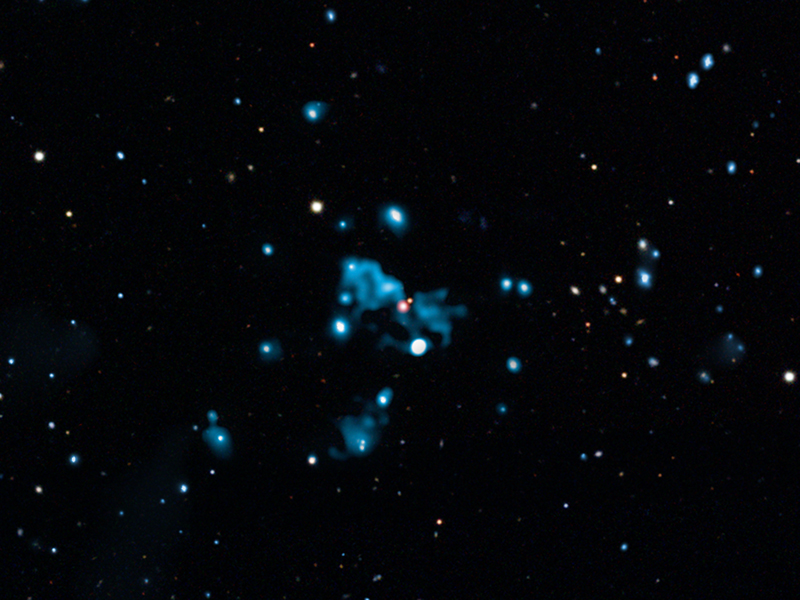
 Credit: X-ray (NASA/CXC/IoA/A.Fabian et al.); Optical (SDSS), Radio (STFC/JBO/MERLIN)
Credit: X-ray (NASA/CXC/IoA/A.Fabian et al.); Optical (SDSS), Radio (STFC/JBO/MERLIN)
A Cry from Long Ago
Supermassive black holes can be messy eaters. Sitting in the middle of their accretion disks, they tend to gobble everything that comes their way. But sometimes they get overwhelmed by the amount of food a galaxy offers them, and when that happens some of the material may escape before it can fall into its voracious maw. This process manifests itself with strong emission at radio, X-ray and other wavelengths, and this emission can be so powerful it often outshines the rest of the host galaxy. But black holes are unsteady eaters too, and after a particularly big meal they may release huge amounts of stuff in a kind of cosmic belch. That's what astronomers think happened in a distant galaxy called HDF 130, pictured above in radio (red, from MERLIN) and in optical light (from the SDSS, in white, yellow and orange). The diffuse, extended emission in blue represents X-ray emission seen in an image taken by the Chandra X-ray Observatory. The radio image shows point-like emission believed to be produced by a still-forming supermassive black hole. But the extended X-ray emission is intriguing. Astronomers believe these X-rays result from an extraordinarily large outburst from the supermassive black hole in HDF 130, something that happened long ago when the Universe was less than one quarter of its current age.
Published: June 01, 2009
<
HEA Dictionary ● Archive
● Search HEAPOW
● Other Languages
● HEAPOW on Facebook
● Download all Images
● Education ● HEAD
>
Each week the HEASARC
brings you new, exciting and beautiful images from X-ray and Gamma ray
astronomy. Check back each week and be sure to check out the HEAPOW archive!
Page Author: Dr. Michael F. Corcoran
Last modified Monday, 26-Feb-2024 17:10:30 EST


